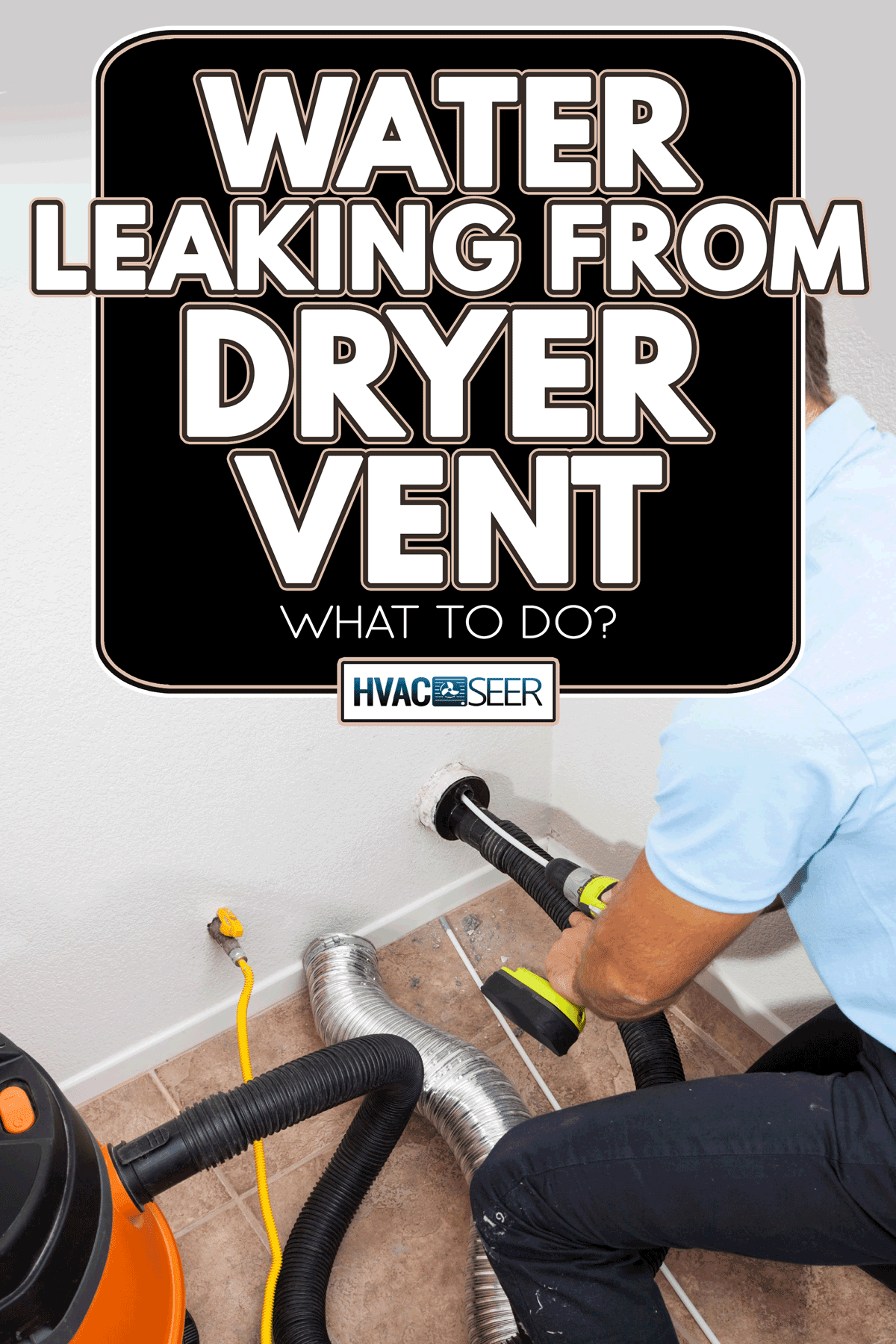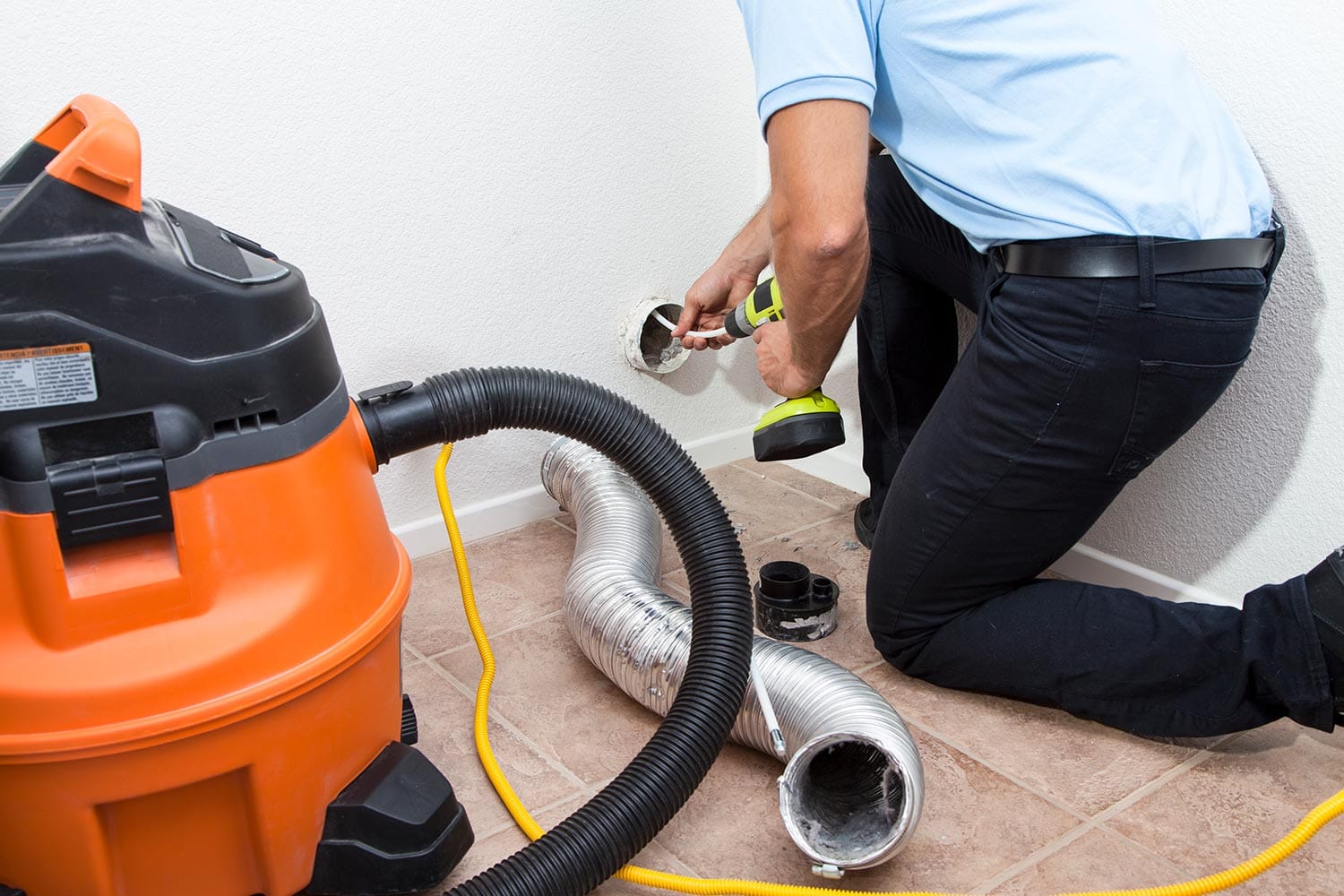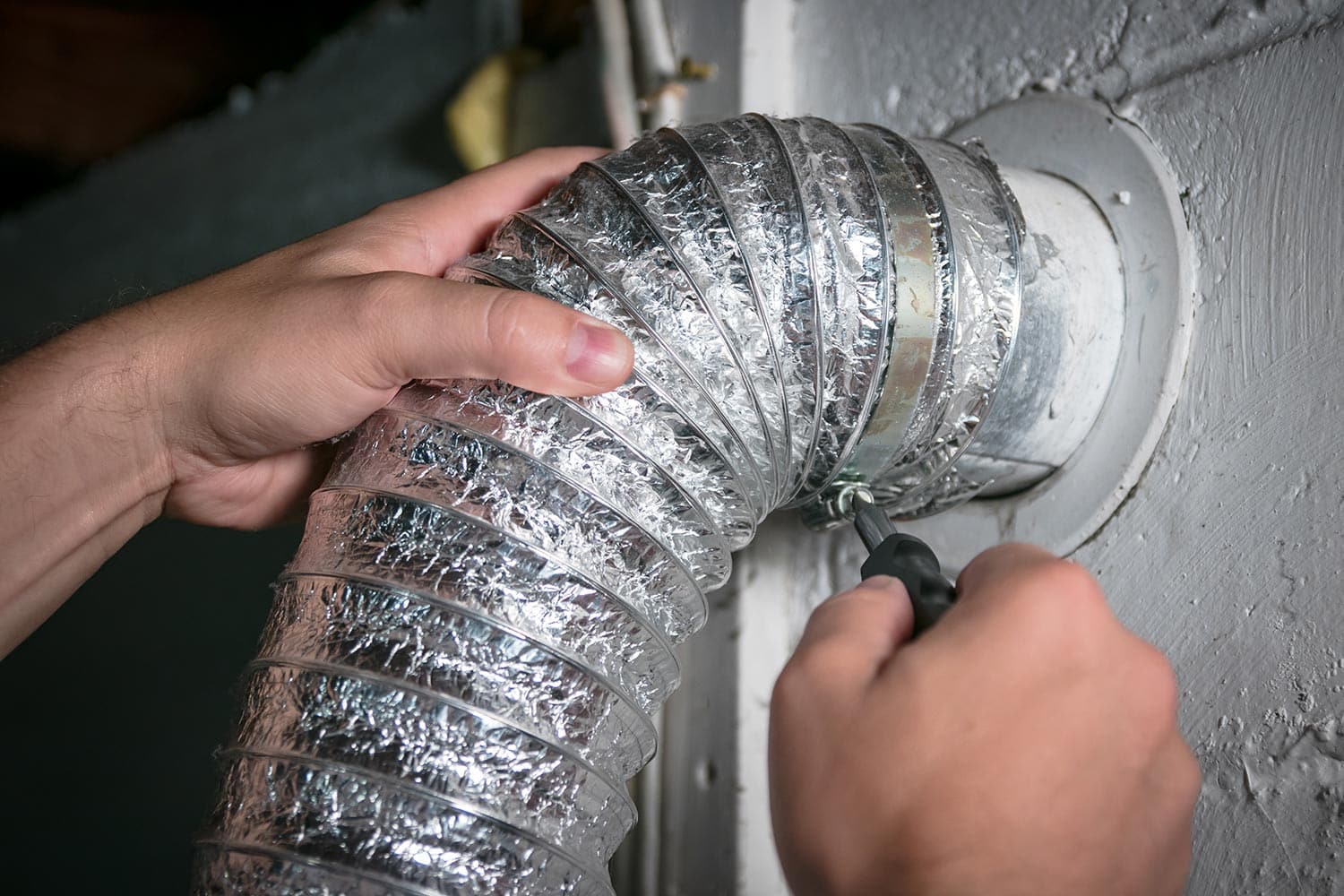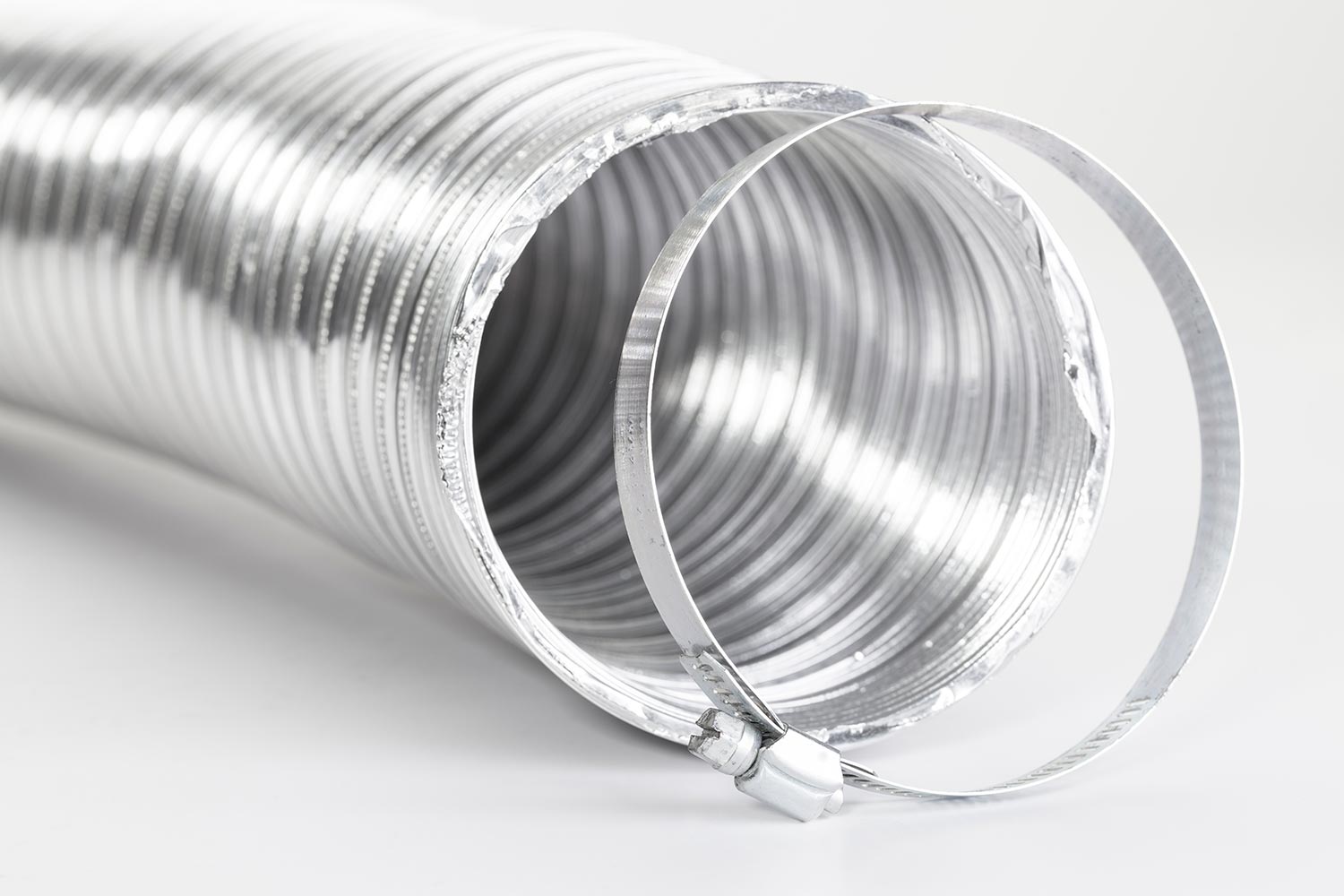Using a dryer is one of the convenient ways to reduce the stress of chores. A dryer vent helps to prevent fire by removing the excess unwanted heat that occurs during a drying machine's drying process. If your dryer vent is leaking water, don't panic, as we have asked experts on how to fix the problem.
The first thing to do when you discover your dryer vent is leaking is to inspect the pipes connected to it. Proceed to clean them afterward, seal the holes and make sure you reduce the length of your dryer vent duct. You need to make spaces between the pipes and attempt to replace worn-out components.
A filthy vent can become clogged with dust and debris thus preventing air and water vapor from passing through the pipe. To learn more about the leaking water in your dryer vent, read further to get the detailed information we have gathered for you.

How Do Dryer Vents Work?
You may ask what the importance of a vent is. Well, a vent in a dryer is very important because all that hot air and moisture would be poured into your house if your dryer didn't have a vent.
This can cause mold and decay, as well as expensive air conditioning rates. If the vent becomes clogged somewhere along its passage to the outside, the same outcomes can be expected.
The dryer vent connects to the vent hood on the back of the dryer. You should use aluminum tubing to vent your dryer. Due to fire dangers and changes in building requirements, many of the older vinyl or plastic tubing is no longer in use.

The tube travels from your dryer to the attic, where it is fed to the outdoors, whether it is under the floor in a crawl space or a wall. The tube is connected with the help of flexible aluminum elbows and foil tape.
The end of the tubing is normally covered to prevent heat and moisture from rising to your roof or damaging an outside wall. To comprehend how the dryer vent works, you must first understand what occurs within your dryer.
Reasons Why Water Is Leaking From A Dryer Vent?

There are several reasons water is leaking from your vent dryer. Some of the reasons might be the following:
The Flapper is Broken
The dryer vent will discharge moisture and heated air to the outdoors. A flapper will protect the exhaust pipe by opening when air flows outward and closing when no activity is present. Rain and snow can easily get inside the dryer vent if the flapper is not shutting properly.
The flapper, on the other hand, might get stuck, leading to moisture buildup that can condense and cause water leaks. At all times, double-check that the flapper is in working order.
Temperatures from the Open Air
Condensation can occur on the outside and edge of the dryer's exhaust pipe when the temperature is extremely cold. This condensation can drop and cause water damage if it isn't properly insulated, giving the appearance of a leak. Insulate the whole length of the exhaust pipe to prevent this from happening.
When you have a problem with your plumbing, heating, ductless air conditioning systems, or HVAC system, you should call a professional to look into and fix it.
The Ventilation Duct has Holes
The dryer may be leaking water because of flaws or cracks in the ventilation system. Condensation could be entering through the broken pipe and accumulating in the dryer.
You must replace the duct if you find a hole or a crack. If the hole is minor, you can repair it with heavy-duty cooling and heating tape.
How To Fix Water Leaking From Dryer Vent
A leaking pipe can result from a lot of several reasons. If you notice your vent pipe is damaged, your best bet is to call a professional who will help you fix the problem. Fixing the cracks yourself might escalate the problem and damage the dryer more. You might even hurt yourself in the process.
If the problem is from the Flapper being bent or damaged, inspect it properly to see if it still opens and closes correctly. If it doesn't close properly, you'll have to replace it with a new one, and you will need to get a professional to help you replace it.
![]()
If you notice the water collection system isn't working, you will have to throw away the condensate pump and clean all the hoses using a brush with strong bristles. In any case, if there is a problem beyond your control, you might need to get a professional to help fix it
How Do I Fix Condensation From My Dryer Vent?
It is crucial to prevent condensation from forming. If you do nothing, your clothes may come out moist and may need to be rewashed, which will take time. Here are ways to fix condensation on your dryer vent.
The Vent Trap Should Be Cleaned
Cleaning up the vent trap is the simplest way to decrease condensation in your dryer. When the lint trap fills up, your dryer won't be able to exhaust all of the hot air during a cycle, resulting in condensation.
After each drying cycle, it is a good idea to clean the vent. Simply remove the vent from the dryer and toss it in the trash to clean it. If you'd rather, you can use a vacuum cleaner. Return it to the dryer once it's clean.
Exhaust Ducts Must be Cleaned
The exhaust duct and pipe will need to be cleaned out next. To avoid lint buildup, clean it out thoroughly at least twice a year, as advised by most manufacturers.
Make Sure The Vent is in The Right Place
If your dryer's condensation problem persists after cleaning the lint trap and vent system, the next step is to make sure the vent is properly positioned. Because your vent passes via an attic, It could be making the vent hotter, and this heat could then be reflected into the dryer.
Because of the risk of fire, dryer vents aren't normally installed in the attic, but in some older homes, this is the usual area to install one. Your vent may potentially pass through an outside wall or under the home, increasing the length of the vent pipe and causing extra condensation.
Check if your vent goes up through your attic or a garage before heading outdoors to make sure it is positioned correctly. If that's the case, see if you can shorten the vent so it can go outside faster. Instead of venting via a wall, you might be able to do it through a window.
Use a Booster or a Vent Flap
To help lower condensation levels, you might be able to add a dryer vent flap. A vent flap aims to allow hot air to escape from the dryer while it is operating through a cycle. The flap closes at the end of the cycle.
Check that your dryer's vent flap isn't obstructed or stuck if it already has one. If the flap is destroyed, it must be changed, which is fortunately not difficult or costly. Consider obtaining a vent flap and placing it on your vent system if your dryer does not already have one.
How Do You Seal a Dryer Vent Pipe?
![]()
According to the Centers for Disease Control and Prevention, spray foam or silicone caulk is perfect for sealing dryer vent gaps because they produce a lasting seal that keeps pests out and prevents air infiltration.
First, clear the dust and debris by removing the dryer vent cover and wiping around the opening with a moist cloth. Clean surfaces are ideal for silicone adhesion.
Next, use a utility knife to trim the tip of a tube of silicone caulk that has been inserted into a caulking gun. A 1/16-inch diameter aperture is usually sufficient, but you should measure the gap to be sure.
Replace the vent cover and caulk the gap between the pipe and the wall with silicone caulk. Afterward, use a dry cloth and wipe any spills off the wall. If the silicone has dried, it can usually be peeled off with the edge of a utility knife. Wait at least eight hours for the caulk to cure before painting or exposing it to water
Does a Dryer Vent Pipe Have to be Sealed?

The dryer vent duct connects the inside of the house to the outside. It is the same as leaving a window partially open if the vent cover doesn't seal well. Insects, mice, and other pests that enter your house through the vent are less evident hazards.
Conclusion
If you notice your dryer vent is leaking water, check the vent pipes and ensure it is thoroughly cleaned. If you notice that any part needs to be replaced, replace it with new ones to avoid further deterioration.
For more articles about dryers, check out these related posts:
